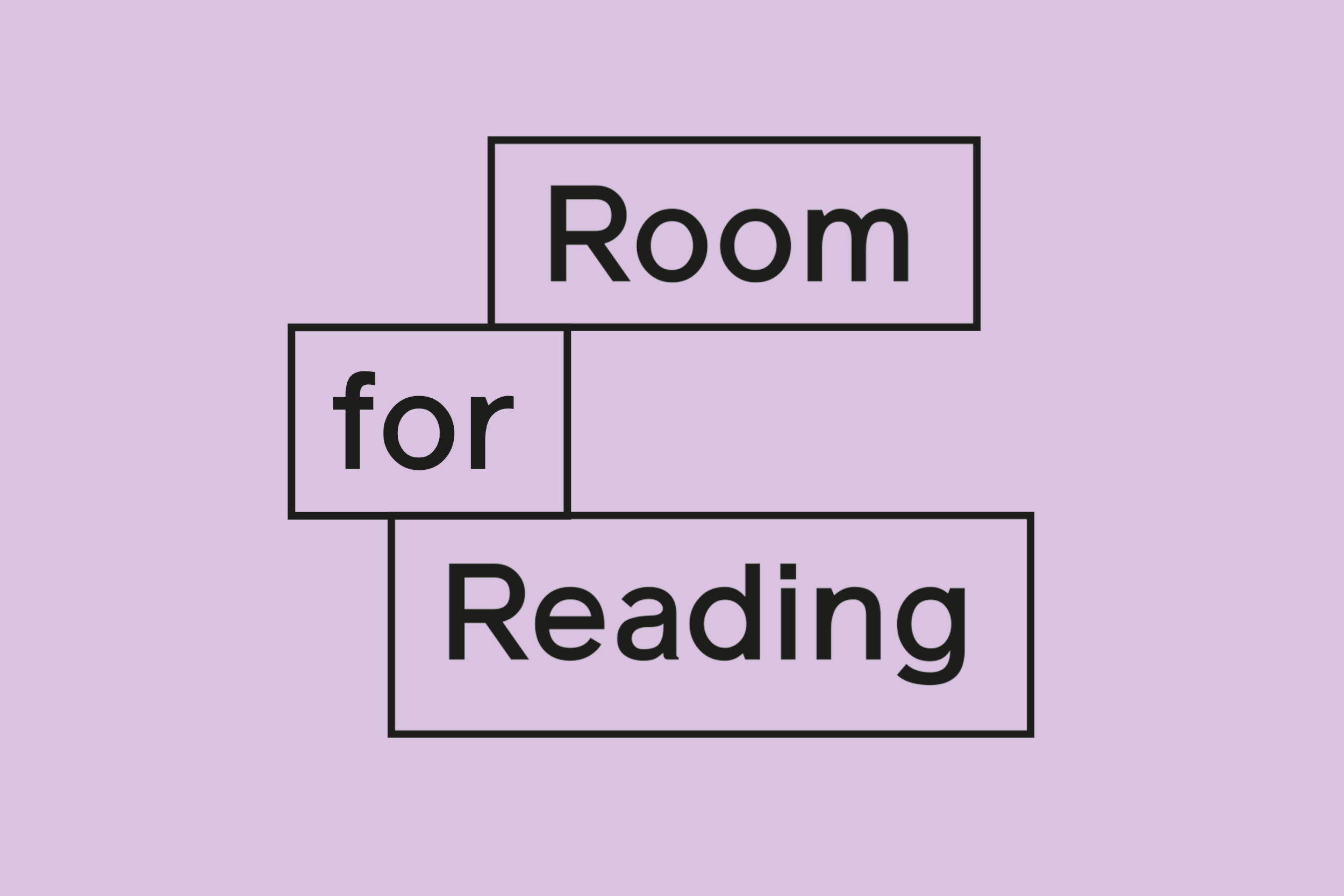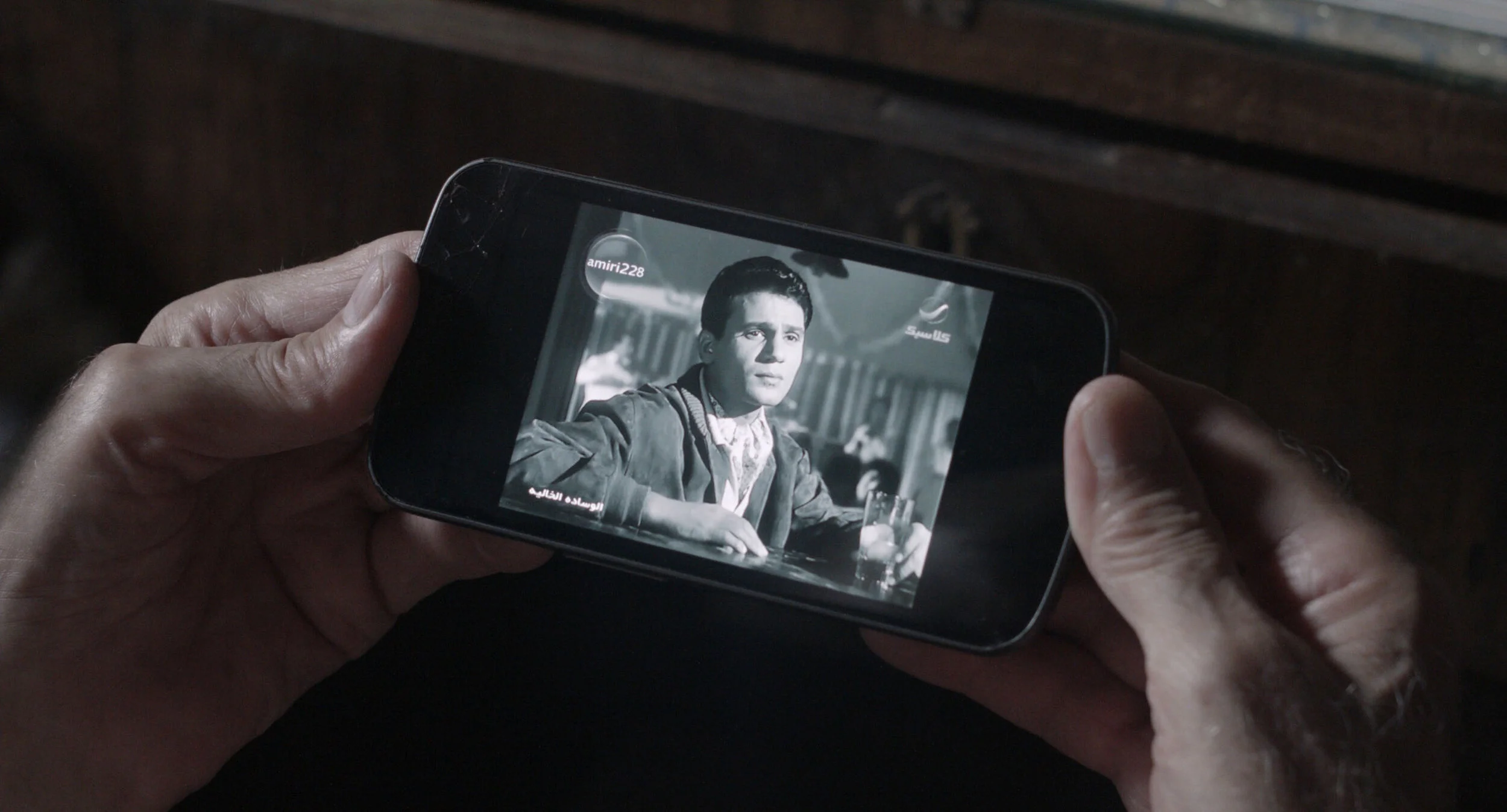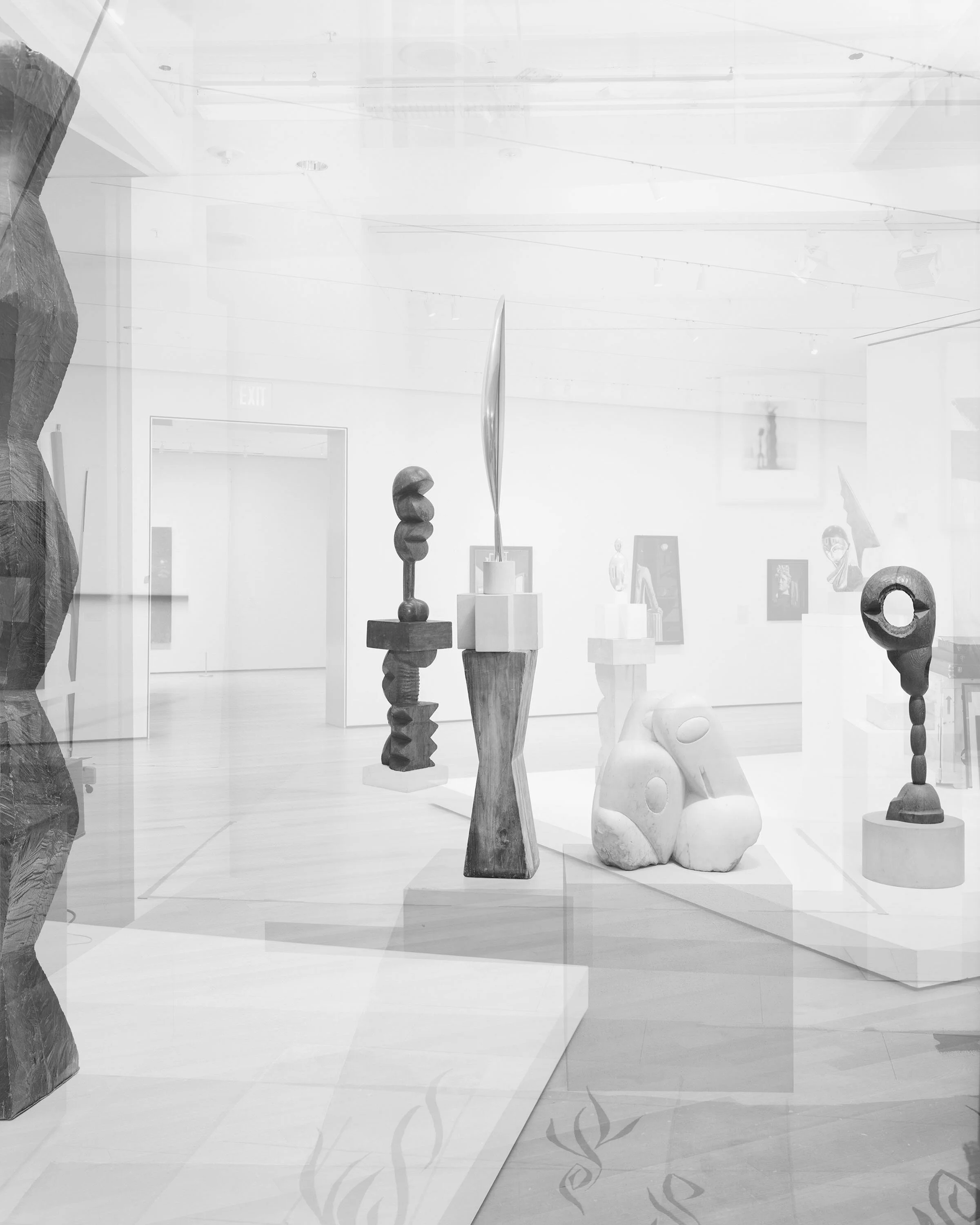Room for Reading features publications about and selected by exhibiting artists in our programme.
Throughout 2016, our Room for Reading selections feature publications chosen and inspired by Ulla von Brandenburg, Akram Zaatari, Simon Starling and Sharon Hayes, artists we are working with on current and upcoming projects.
Ulla von Brandenburg: Whose beginning is not, nor end cannot be’ (2008); Innen ist nicht Außen (Inside is not Outside) (2013) ; and Formerly Elentiere (2008)
In advance of Ulla von Brandenburg’s performance ‘Sink Down Mountain, Rise Up Valley’ at Langside Halls on the 30th and 31st of January, we have selected three publications on the artist’s work.
‘Whose beginning is not, nor end cannot be’ was published on the occasion of Von Brandenburg’s exhibition at the Irish Museum of Modern Art in Dublin in 2008. The publication features essays by Declan Long and Beatrix Ruf, as well as an interview between the artist and Rachel Thomas.
‘Innen ist nicht Außen (Inside is not Outside)’ was published in 2013 to accompany an exhibition of the same name at Vienna Secession. It features texts by Nina Möntmann, András Pálffy, Annette Südbeck and René Zechlin.
‘Ulla Von Brandenburg. Formerly Elentiere’ (2008) was published following the exhibition, ‘Where a red net lies over the green’ at the Kunstverein für die Rheinlande und Westfalen, Düsseldorf, 2008, and features texts by Nina Möntmann and Vanessa Joan Müller.
Antoine Picon, ‘The Saint-Simoniens: Reason, Imagination and Utopia’ (2002)and Ralph P. Locke ‘Music, Musicians and the Saint-Simonians’ (1986).
Von Brandenburg selects ‘The Saint-Simoniens: Reason, Imagination and Utopia’ by Antoine Picon (2002), in which Picon discusses Saint-Simonianism, an influential utopian movement in 19th Century France, paying special attention to Saint-Simonian ideas about architecture and public space.
Von Brandenburg’s second selection Music, Musicians and the Saint-Simonians’ (1986) by Ralph P. Locke outlines Saint-Simonian approaches to music as an ideological tool.
Read ‘The Saint-Simoniens: Reason, Imagination and Utopia’ here.
Akram Zaatari, ‘Akram Zaatari: A Conversation with an Imagined Israeli Filmmaker Named Avi Mograbi’ (2012); ‘Time Capsule, Kassel 24/25.05.2012’ (2013), 'Film as a Form of Writing: Quinn Latimer talks to Akram Zaatari’ (2014).
As Akram Zaatari, ‘The End of Time’ opens at 21 Woodlands Terrace, the artist has made a selection of books to accompany the exhibition.
The first is 'Akram Zaatari: A Conversation with an Imagined Israeli Filmmaker Named Avi Mograbi’ published by Sternberg Press, 2012. During a residency at Les Laboratoires d'Aubervilliers, Zaatari attempted to write, improvise, and deliver a conversation with an imagined Israeli filmmaker, giving him the name Avi Mograbi. Zataari used this fictional character as a device to revisit photographs he made during the Israel occupation of his hometown in 1982, imagining what could have been experienced by an Israeli filmmaker in this time.
'Akram Zaatari: Time Capsule, Kassel 24/25.05.2012' is a postscript to the exhibition 'This Day at Ten' at MAGASIN - Centre National d'Art Contemporain de Grenoble, 2013. Inspired by an act of conservation that the founder of the National Museum in Beirut undertook on the eve of the civil war in 1975–6, ‘Time Capsule, Kassel’ is, in the artist's words, a statement about speculation, photography, time and withdrawal.
'Film as a Form of Writing: Quinn Latimer talks to Akram Zaatari’ (2014) is an in-depth interview between the artist and critic Quinn Latimer. In the interview Zaatari describes his work: “as with most of my work, it is made for time; it is both a testimony of where I come from and a mark I care to leave for the future—again as thought, not as data or records. Let’s call it alternative writing that uses the form of letters.”
Read Quinn Latimer on Akram Zaatari in Artforum here.
Watch a short film by Akram Zaatari about ‘Time Capsule, Kassel’ here.
Karl Bassil, Zeina Maasri and Akram Zaatari, 'Mapping Sitting: On Portraiture and Photography'(2002)'; Karl Bassil and Akram Zaatari, ‘'EARTH of ENDLESS SECRETS' (2009); Akram Zaatari, All Is Well' (2014)
Zaatari also selects 'Mapping Sitting: On Portraiture and Photography' by Karl Bassil, Zeina Maasri, and Akram Zaatari (2002) which accompanied the eponymous exhibition curated by Walid Raad and Zaatari from the Arab Image Foundation. Featuring photographs taken between the 1920s and the 1970s, in Lebanon, Egypt, Iraq, Palestine and Jordan, it raises questions about portraiture, performance, photography and identity in the Arab world.
'EARTH of ENDLESS SECRETS' by Karl Bassil and Akram Zaatari (2009) examines Zaatari’s ongoing research project, unearthing and examining a wide range of documents that testify to the current cultural and political conditions of Lebanon.
Akram Zaatari’s 'All Is Well' (2014), published on the occasion of the artist’s first solo exhibition in Canada, addresses the complex history of the civil conflict in Lebanon. The publication explores the precarious status of archives in times of war, as well as their discursive limits as narrators of Lebanon’s history.
Read an interview with Zaatari on ‘Mapping Sitting’ published by MoMA here.
Watch a selection of excerpts from Zaatari’s films on Video Data Bank here.
Watch Zaatari speak about photography, memory and here.
Etel Adnan, ‘Sitt Marie-Rose’ (1982); Jibrail S. Jabbur, ‘The Bedouins and The Desert:Aspects of Nomadic Life in the Arab East’ (1995); Ariella Azoulay ‘From Palestine to Israel: A photographic Record of Destruction and State Formation, 1947-1950’ (2011).
In the final instalment of Akram Zaatari’s Room for Reading selections, the artist selects authors and critical works that describe aspects of Arab life.
'Sitt Marie-Rose (A Novel)' by Etel Adnan (1982) is set before and during the 1975-1990 Lebanese Civil War, and based on the life of Marie Rose Boulos who was executed by a Christian militia during the long conflict.
'The Bedouins and The Desert: Aspects of Nomadic Life in the Arab East' by Jibrail S. Jabbur (1995) is an extensively illustrated account of traditional bedouin life in the Arab east which recounts the history of the enigmatic Slayb tribe.
'From Palestine to Israel: A photographic Record of Destruction and State Formation, 1947-1950' by Ariella Azoulay, a photo book in which Azoulay reconstructs the processes by which the Palestinian majority in Mandatory Palestine became a minority in Israel.
Sonallah Ibrahim , ‘Zaat’ (2011); Jacques Derrida, ‘Archive Fever’ (1995).
Sonallah Ibrahim’s 'Zaat'(2001) tells the story of an Egyptian woman – the eponymous Zaat – during the regimes of three Egyptian presidents: Abdel Nasser, Sadat, and Mubarak.
'Archive Fever: A Freudian Impression' by Jacques Derrida (1995), a deconstructive analysis of the notion of archiving and an extended meditation on remembrance, religion, time, and technology, including the e-mail.
Read ‘Sitt Marie Rose’ here.
Read an excerpt from 'The Bedouins and The Desert: Aspects of Nomadic Life in the Arab East' here.
Listen to a talk by Ariella Aisha Azoulay ‘On Photography and Potential History’ here.
Read ‘Archive Fever: A Freudian Impression’ here.
Ezra Pound, ‘A Memoir of Gaudier-Brzeska’ (1970); David R. Clark, ‘W.B. Yeats & the Theatre of Desolate Reality’ (1965); Nobuko Tsukui, ‘Ezra Pound and the Japanese Noh Plays’ (1983).
To coincide with Simon Starling’s exhibition ‘At Twilight’, the artist has selected the following books for this month’s Room for Reading.
'A Memoir of Gaudier-Brzeska' (1970) by the modernist poet and writer Ezra Pound was first published in 1916. The 1970 edition brings together Pound’s original text with later writing on Henri Gaudier-Brzeska, the French sculptor with whom Pound had a friendship before the former was killed in World War One. Pound was a huge champion of Gaudier’s work and raised the profile of the artist both during his life and after his death.
'W.B. Yeats & the Theatre of Desolate Reality' (1965) by David R. Clark illustrates Yeats’ development as a dramatist, through close examination of four of the modernist poet, playwright and writer’s plays.
Starling has chosen two books on Noh Theatre, a Japanese form of dance-drama that has been performed since the 14th Century. 'Ezra Pound and Japanese Noh Plays' (1983) by Nobuko Tsukui, and 'The Noh Theatre of Japan' (1959) by Ernest Fenollosa and Ezra Pound. Starling has also selected 'A Guide to Kyogen' (1968) by Don Kenny, a book designed as a basic guide for the viewer of a Kyogen performance containing synopses of all the plays in the present repertoire of the Kyogen practice.
'Stone Cottage: Pound, Yeats & Modernism' (1988) by James Longenbach details the period between 1913-16 during which W.B Yeats developed his autobiographies and Noh-style plays with the help of Ezra Pound.
Finally, Starling selects 'Four Plays for Dancers' (1921) by W.B.Yeats, which includes 'At the Hawks Well' a play by that was written and performed 100 years ago and is at the heart of Simon Starling and Graham Eatough’s ‘At Twilight: A play for two actors, three musicians, one dancer, eight masks (and a donkey costume)’.
Read ‘A Memoir of Gaudier-Brzeska' here and read more about Yeats and Brzeska here.
Read ‘The Collected Plays of W.B. Yeats’ (1963) published by MacMillan here.
Sharon Hayes
Francesco Bonami and Gary Carrion-Murayari, ‘2010’ (2010); ‘Sharon Hayes, ‘There’s So Much I Want To Say To You’ (2012) ; ‘Il Palazzo Enciclopedico’ (2013).
As Sharon Hayes’ exhibition 'In My Little Corner of the World, Anyone Would Love You’ opens to the public, we have selected three publications that focus on the artist’s earlier work.
Sharon Hayes, 'There's So Much I Want To Say To You' (2012) was published in conjunction with Hayes eponymous exhibition at the Whitney Museum of American Art in 2012 which brought together works, all of which articulate forms of what Hayes calls “speech acts”.
Hayes’ ‘Ricerche: three’ (2013) was commissioned and presented as part of ‘Il Palazzo Enciclopedico’ (The Encyclopedic Palace) curated by Massimiliano Gioni on the occasion of the exhibition at the 55th International Art Exhibition of La Biennale di Venezia. The catalogue is included here.
Our final recommendation is the catalogue accompanying the 2010 Whitney Biennial, titled ‘2010’, curated by Francesco Bonami and Gary Carrion-Murayari, in which Hayes’ work ‘Parole’ (2010) was included.
Read more about ‘There’s So Much I Want To Say To You’ here.
Read Massimiliano Gioni’s curatorial text for ‘Il Palazzo Enciclopedico’ here.
Read more about ‘Parole’ and ‘Ricerche: three’ in an essay by Julia Bryan-Wilson for Afterall Journal here.
Renate Lorenz, ‘Queer Art: A Freak Theory’ (2012)'; Andrea Geyer and Sharon Hayes, ‘History Is Ours’ (2009); Sharon Hayes, ‘After Before - in the near future’ (2008).
Sharon Hayes recommends 'Queer Art: A Freak Theory' (2012) by Renate Lorenz. Lorenz’s book develops a queer theory of visual art based on extensive readings of art works and theoretical debates combining queer theory with post-colonial theory, and (dis-)ability studies, proposing the three terms: “radical drag”, “transtemporal drag”, and “abstract drag”.
Hayes also selects 'History Is Ours' (2009) by Andrea Geyer and Sharon Hayes, published by Kunst Museum St. Gallen and Kehrer Verlag Heidelberg to accompany a collaborative exhibition of the same name. The publication features transcripts and documentation of the artists’ work as well as conversations with Yvonne Rainer and Wu Tsang.
Lastly, 'After Before - in the near future’ (2008) by Sharon Hayes which documents Hayes’ project ‘After Before’, a multi-channel video installation developed during a studio residency at the Lower Manhattan Cultural Council in 2004.
Read an excerpt from ‘Queer Art: A Freak Theory’ here.
Read ‘History Is Ours’ here.
Read ‘After Before – in the near future’ here.
Details
Room for Reading is a space to engage with research related to our programme as recommended by the artists and collaborators we work with at The Common Guild.
Books are suggested in conjunction with our exhibitions and projects.

















